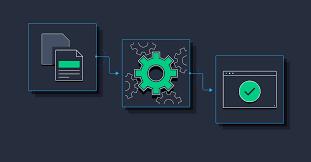A Checklist of Things You Need to Check Before Choosing a Static Site Generator

Three seconds - that's all it takes for visitors to abandon a slow-loading website. Static site generators (SSGs) have emerged as the speed demons of web development, transforming sluggish sites into lightning-fast digital experiences. But with over 300 SSGs available today, choosing the right one can feel like finding a needle in a digital haystack.
The stakes are high; pick the wrong generator, and you might end up with a solution that bottlenecks your development process or fails to scale. While platforms like WordPress offer the comfort of familiarity and Shopify brings turnkey e-commerce solutions, static site building tools promise a lean, secure, and blazingly fast alternative - if you choose wisely.
In this blog, we'll discuss the essential checkpoints you should consider before committing to a static site generator for your next project.
Language and Framework Compatibility
Your choice of static site generator should align with your team's expertise. Popular options like Gatsby use React, while others might use Vue or plain JavaScript. If your team is proficient in PHP from WordPress development, consider generators that leverage similar syntax to reduce the learning curve.
Technical Requirements Assessment
Before diving in, evaluate your project's specific needs. Static site building tools excel at building content-focused websites but may require additional setup for dynamic features. Consider:
User authentication requirements
Dynamic content needs
E-commerce functionality
Form handling capabilities
API integration requirements
Performance and Build Time
Speed matters in both development and production. Analyse build times, especially for larger sites. While static generators generally deliver excellent performance, some handle large datasets better than others. Compare build times across different generators using similar content volumes to your project.
Content Management System Integration
Modern static generators play well with headless CMS platforms. Whether you're transitioning from WordPress or starting fresh, ensure your chosen generator supports your preferred content management system. This is particularly crucial if you're working with custom WordPress development services to migrate an existing site.
Deployment and Hosting Options
Most static site tools work seamlessly with popular hosting platforms. Consider:
Automatic deployment capabilities
CDN integration
Build plugin availability
Hosting costs
Version control integration
Community and Support
A thriving community means better resources and faster problem-solving. Look for:
Active GitHub repositories
Regular updates and maintenance
Comprehensive documentation
Community forums and discussion boards
Available third-party plugins
Development Workflow
Your static site generator should enhance, not hinder, your development process. Essential features include:
Hot reloading for development
Asset optimisation
Code splitting capabilities
SEO tools integration
Developer-friendly debugging tools
Scalability Considerations
As your project grows, your static site generator needs to keep pace. Consider how it handles:
Large content repositories
Multiple content contributors
Complex build processes
International markets and localisation
Performance optimisation at scale
E-commerce Integration
For businesses, especially those working with, for example, a Shopify development company in Delhi or any other location, ensure your static site generator supports:
Product catalogue management
Shopping cart integration
Payment gateway compatibility
Inventory synchronisation
Order management systems
Cost Analysis
While most static generators are open-source, consider the total cost of ownership:
Hosting expenses
Development time
Training requirements
Third-party service costs
Maintenance overhead
Future-Proofing Your Choice
Technology evolves rapidly. Your chosen static site generator should demonstrate the following:
Regular feature updates
Security patch releases
Growing adoption rates
Framework stability
Clear upgrade paths
Making the Final Decision
Consider creating a scoring matrix based on these factors, weighing them according to your project's priorities. Remember that the "perfect" static site generator doesn't exist - focus on finding the one that best matches your specific needs and constraints.
The transition to static site generation represents a significant shift in web development practices. While platforms like WordPress and Shopify continue to serve their purposes well, static site generators offer compelling advantages for many projects. By carefully evaluating each point in this checklist, you'll be better equipped to make an informed decision that serves your project's needs both now and in the future, whether you go for custom WordPress development services or services for your Shopify website.
Post Your Ad Here
Comments